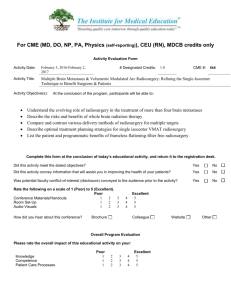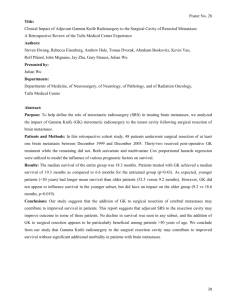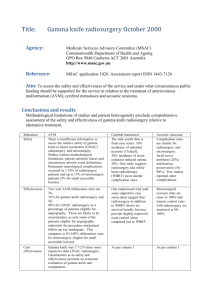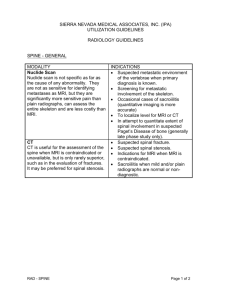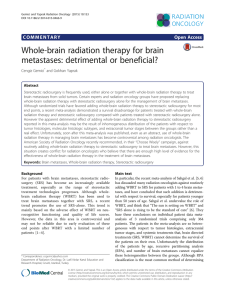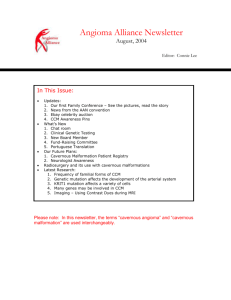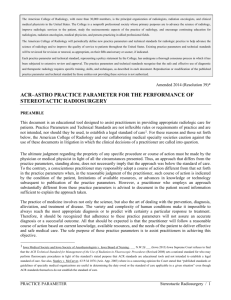Evaluating the Efficacy of Stereotactic Spinal Radiosurgery
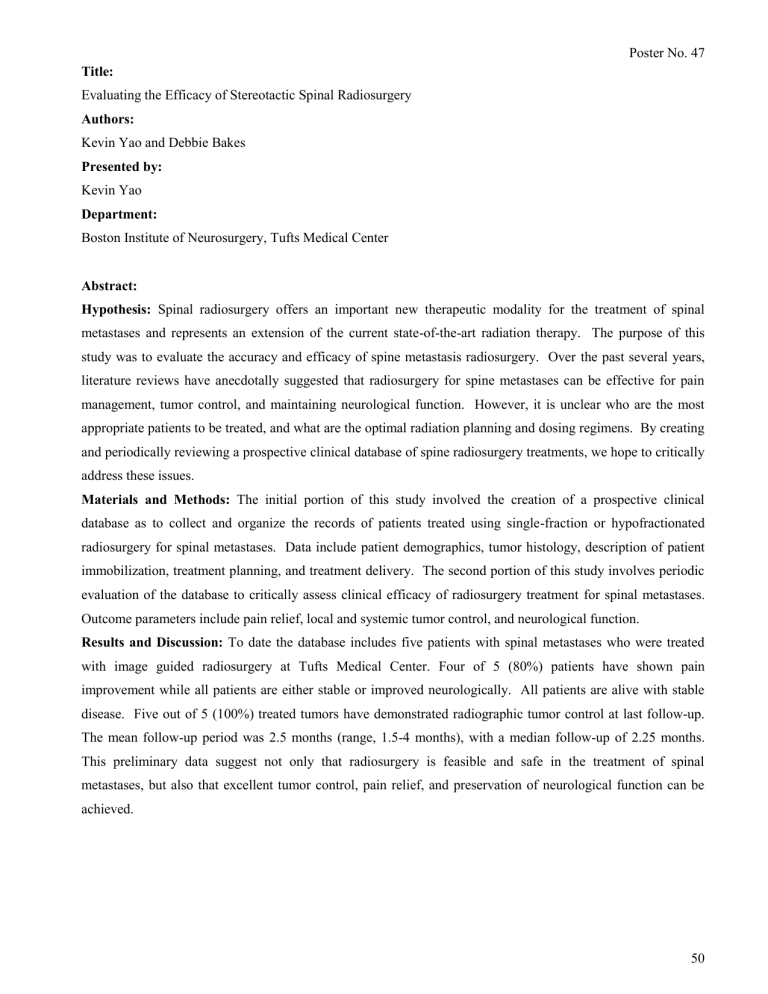
Poster No. 47
Title:
Evaluating the Efficacy of Stereotactic Spinal Radiosurgery
Authors:
Kevin Yao and Debbie Bakes
Presented by:
Kevin Yao
Department:
Boston Institute of Neurosurgery, Tufts Medical Center
Abstract:
Hypothesis: Spinal radiosurgery offers an important new therapeutic modality for the treatment of spinal metastases and represents an extension of the current state-of-the-art radiation therapy. The purpose of this study was to evaluate the accuracy and efficacy of spine metastasis radiosurgery. Over the past several years, literature reviews have anecdotally suggested that radiosurgery for spine metastases can be effective for pain management, tumor control, and maintaining neurological function. However, it is unclear who are the most appropriate patients to be treated, and what are the optimal radiation planning and dosing regimens. By creating and periodically reviewing a prospective clinical database of spine radiosurgery treatments, we hope to critically address these issues.
Materials and Methods: The initial portion of this study involved the creation of a prospective clinical database as to collect and organize the records of patients treated using single-fraction or hypofractionated radiosurgery for spinal metastases. Data include patient demographics, tumor histology, description of patient immobilization, treatment planning, and treatment delivery. The second portion of this study involves periodic evaluation of the database to critically assess clinical efficacy of radiosurgery treatment for spinal metastases.
Outcome parameters include pain relief, local and systemic tumor control, and neurological function.
Results and Discussion: To date the database includes five patients with spinal metastases who were treated with image guided radiosurgery at Tufts Medical Center. Four of 5 (80%) patients have shown pain improvement while all patients are either stable or improved neurologically. All patients are alive with stable disease. Five out of 5 (100%) treated tumors have demonstrated radiographic tumor control at last follow-up.
The mean follow-up period was 2.5 months (range, 1.5-4 months), with a median follow-up of 2.25 months.
This preliminary data suggest not only that radiosurgery is feasible and safe in the treatment of spinal metastases, but also that excellent tumor control, pain relief, and preservation of neurological function can be achieved.
50

